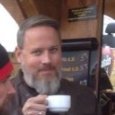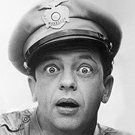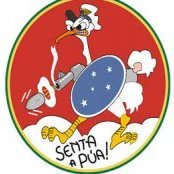Leaderboard
Popular Content
Showing content with the highest reputation on 04/22/2019 in all areas
-
morning folks Hi Jay - the wheels & tyres are 3D modelled already, just tweaking the design with some help as the treads and the flat spot are a bit too complex for my limited knowledge ..thanks KUROK - the Awl set I have has about 25 sizes from a pinprick to about 1.5mm in diameter - the slot for the screw is then added with a scalpel blade point ground down to a tiny flat blade.. ..I set myself a target of getting the wings skinned before I go back to work tomorrow, and it is pretty much done.. ..I went by this factory photo of where the filler was used on the leading edge (posted under fair use) and as can be seen, it does not extend to the wingtip so that panel was left detailed.. ..a tape template for the main panel.. ..and after annealing the leading edge and some fine fettling to fit all the rear panels the skin is added... ..a piano hinge was added to the forward gun door by scoring lines on a sheet of litho and bending it double so the edge is upright - this was let into a slot in the wing.. ..the gear leg mount access panel & gun ports.. ..and the basis of the wings is done.. ..getting there... TTFN Peter11 points
-
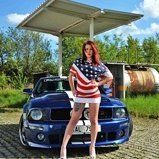
P-51D-15-NA Maj. George E.Preddy Jr. 1/32 ZM
nmayhew and 8 others reacted to Miloslav1956 for a topic
1/32 Zoukei-Mura EagleCals decals set for Preddy HGW wet transfers & seat belts Barracuda cockpit decals & wheels Colours MRP, Gunze, Alclad II, Eduard Look instrument panel.9 points -
Another 1/32 Spitfire. The cheap (Revell) one!
Alain Gadbois and 7 others reacted to TimHepplestone for a topic
With mojo running low I decided I needed a cheap and cheerful build. Out came Revell's Mk IX Spitfire. Adding a pilot obviated the need for lots of cockpit detailing (as well as demonstrated my ineptitude at figure painting). Aside from the pilot its OOB. Markings are RCAF 416 Squadron out of Tangmere in 1944 as per the kit. The major markings are sprayed using montex masks. The invasion stripes are speculative on my part as I have no evidence this aircraft ever had them. Call it modelling licence and anyway I just like the look of them. 1944 Spitfire without invasion stripes is like alcohol free beer - missing something. Painted with Mr Color RAF late war set. I must confess that I'm really impressed with the paints. They spray easily and dry quickly to a hard satiny finish,8 points -

Special Hobby Tempest Mk V 'Hi Tech'
Anthony in NZ and 7 others reacted to aircare84 for a topic
Just finished today; Special Hobby Tempest Mk V 'Hi Tech' kit. Finished as SA-M, a Mk V flown by James Sheddan of 486 Squadron. Beautiful model when finished. Takes a lot of work to get there though. Many fit issues which I guess is common for the brand. Sure looks good when finished though. The Hi Tech kit comes with the 1/2 engine, lots of resin to replace plastic kit parts, HGW seat belts & photo etch details. After seeing Misoslav build so many, I was real interested in trying my hand at one. Got the kit @ 1/2 price on sale at a on line retailer. Added Barracuda resin nose & prop, Eduard flaps. Painted using MRP paints. All markings except stencils, kill markings & Squadron flag are painted on. Thanks to Reimund for the kill markings & flags ! Weathered using washes, pastels & hair spray technique for the chipping. Thanks for looking & all comments welcome. Larry8 points -
Revell 1/32 Fw 190. First build since 2001.
Trak-Tor and 6 others reacted to Longbow_06 for a topic
And this is how the pit stands so far... I probably won't add any more to this, at this time. I'll see how she looks with some pain on her. So, next I'll be tackling the cockpit side walls. And then the instrument panel. Hopefully the rest of the kit will go well lol !! Thanks for looking, so far... Lee.7 points -
John... the armored glass was supplied as two parts in my F4U-1a kit: A little bit of weathering applied to the tail wheel parts.6 points
-
French F-100
John1 and 4 others reacted to Jan Goormans for a topic
Trumpeter 1/48 F-100 finished in French markings, adapted the colours to a pictures found in a book. Made out of the box, weathering first with Flory washes and then with oil paints, works fine for me. Jan5 points -
Revell 1/32 Fw 190. First build since 2001.
Trak-Tor and 4 others reacted to Longbow_06 for a topic
Good evening !! recently I joined here, after lurking on the site for many years. Im actually English, and moved to the States in 2001. Back in England my main modeling focus was on 1/35 armor, and 1/48 aircraft. I’m now 50, with aging eyesight So I figure I’m sticking to 1/32 aircraft now. Only a a few weeks ago, I found out that Revell had released a new tooled 190. So I jumped on ordering one. i put off starting it, for a week, and dived into the forum... Years ago, I wasn’t into buying aftermarket items, and this is the plan with this one. Scratch an approximation of everything that needs upgrading. The kit kit by the way, looks fantastic to me. But I am used to older tooling.5 points -
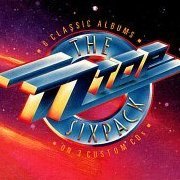
A Tale of two Cobras: FINISHED
Model_Monkey and 4 others reacted to Dukie99 for a topic
Carl, thank you for leaving a post. It is indeed nice to see the differences between the two airframes. What I found interesting is that the two crew positions are completely interchangeable: you can fly from the front seat and use the weapon systems from the back or fly from the back and fight from the front, something that could not be done in the Whiskey. If the pilot spots a target from the back it will show on the displays of its co-pilot seamlessly, where in the Whiskey, the pilot would have to give his copilot visual directions for him to spot, acquire and engage. I am sure the crew love these features. OK, time for an update. If you have followed this build from the start, you will recall I was not super happy with the 20mm gatling gun provided in the kit The gatling gun in the Whiskey kit was completely useless, so I had replaced it with the Masters offering and I was very happy with the result. So I bought another one to replace the Zulu gun. I thought that it would be useful to show how the Masters gun build and how you adapt it to the kit parts, fortunately that was very easy, so here we go: Masters parts and instructions You start by using kit part C18 (the part looks a bit messy because I salvaged it after building the gun from the kit parts) Then you glue with CA the brass base of the gun on the kit part. The brass is almost a perfect fit to the kit part, you just need to slightly scrape the inner lip of the part and it will fit snugly. In the brass base there are three holes to accept the barrels. I used a drill bit to drill the three holes in the kit parts and then glued the three barrels with CA Then you glue the middle brace: and you finish the gun with the muzzle brace (using thin CA): Then I glued kit part C18 to part C35, primed the gun with Aclad gloss black and then Alclad steel Then I glued the base together. I painted it before assembly Yellow primer. Not sure this is accurate however. The manual calls you to glue part C38 (the part of the gun shield that moves with the gun). Before doing that you need to add the corresponding shark mouth decal (if you are building one of the three shark mouth versions in the kit). If you glue the shield without the decal, good luck putting the decal afterwards. gun shield glued to the gun assembly. The hole is just big enough to accomodate the Masters barrels, just go slowly: Then I glued the two sides of the turret around the gun. The fit is perfect and the gun moves up and down. You need to paint the turret gloss white before assembling it because the shark mouth decals only has white printed on the top part of the decal. I think they left the white out on the bottom part to allow for the curvature of the turret (there is no transparent film between the bottow teeth). I have not applied that decal yet. This leaves a seam on the turret but the front seam will not be seen once the turret is in its housing and the back seam can be eliminated without fouling the front of the turret (at least that is the plan). I think the Masters barrels are a nice addition to the kit and they fit very easily to the kit parts. More progress soon. Cheers, David5 points -
Thanks Kev! I appreciate that! Just learning and sharing! Some more thinning of trailing edges... The horizontal stabilizers have been assembled. The tab actuators are separate parts so need to scratchbuild. The stabs are not mirror imgs of each other but are actually identical to each other. The main gear struts have been painted. Still figuring out how to weather these white legs. The tail leg was kind of test of different things to see how they would look and I've started to consolidate some ideas on the main legs. Primarily, after painting and a dark wash, I've added some grey chipping using a sponge. Some areas were then dabbed with AK Fresh Engine Oil, which is a new one for me. It is a translucent enamel wash, I believe.5 points
-

1/24 Airfix RCAF Mustang IV…finally done
Martinnfb and 4 others reacted to R Palimaka for a topic
The next big step is priming for the NMF finish, and the filled and painted wings. In preparation I've been filling and polishing out scratches and poorly scribed panel lines to try to get it as smooth as possible. Along the way I've managed to break off the tailwheel leg (I knew it would happen eventually), which I've decided to leave off for now. I've drilled and pinned it, so that when it does go back on I'll probably epoxy it together with the metal pins. Somehow I also managed to break one of the arms of the radio rack inside the cockpit. That was an exercise in frustration trying to replace that, but I got it done, painted it matte black and no one is the wiser...except all of you I guess. Some of the smaller parts being created/refined include the rocket stubs (slotted shoes added to the bottom of the front mounting), new fuel filler caps, detailing the bomb racks, new landing light scratch built and painted, and an attempt to rebuild the sliding portion of the canopy. The exhaust shroud, and the exhaust pipes themselves had to be reduced in height and depth to fit the new opening that was reduced to the correct size. The painting of the airframe and attaching the canopy are the two steps that really concern me. The other little bit that I have yet to do is sculpt and polish some wingtip navigation lights out of the toothbrush handles. The colours seem a little weak, but maybe with a bit of clear paint they will look better. Yes, I have four windscreens, because I know that is going to be a bugger to do neatly. I will likely have to sacrifice a couple before I get it right. That's it for now...next time it should be a primed and ready airframe with all the detail bits finished and ready to attach. Richard5 points -
---------------Détecter la langueAfrikaansAlbanaisAllemandAmhariqueAnglaisArabeArménienAzériBasqueBengaliBiélorusseBirmanBosniaqueBulgareCatalanCebuanoChewaChinois (simplifié)Chinois (traditionnel)CingalaisCoréenCorseCréole haïtienCroateDanoisEspagnolEspérantoEstonienFinnoisFrançaisFrison occidentalGaélique écossaisGalicienGalloisGéorgienGoudjeratiGrecHaoussaHawaïenHébreuHindiHmongHongroisIgboIndonésienIrlandaisIslandaisItalienJaponaisJavanaisKannadaKazakhKhmerKirghizeKurdeLaoLatinLettonLituanienLuxembourgeoisMacédonienMalaisMalayalamMalgacheMaltaisMaoriMarathiMongolNéerlandaisNépalaisNorvégienOurdouOuzbekPachtoPendjabiPersanPolonaisPortugaisRoumainRusseSamoanSerbeShonaSindhiSlovaqueSlovèneSomaliSotho du SudSoundanaisSuédoisSwahiliTadjikTagalogTamoulTchèqueTélougouThaïTurcUkrainienVietnamienXhosaYiddishYorubaZoulouFrançais a little fun with a mustang, it changes a little :4 points
-
Hello, today I finished this F-86D Sabre Dog, straight oob. I found a picture in the net, where the Texas ANG didn’t wear these fancy orange bands, so I left‘em off.... Best wishes, Chris ...and here with a wash...4 points
-
For those interested here is a full scale build... a treasure trove (a few hundred pages) of info & pics for those interested in details !! Thanks to The Aerodrome !! Much of the info can be used for most Fokker aircraft. http://www.theaerodrome.com/forum/showthread.php?t=248874 points
-
Revell 1/32 Fw 190. First build since 2001.
Model_Monkey and 3 others reacted to Longbow_06 for a topic
On to the cockpit.... Please bear in mind that I have not brought paints yet lol... Everything is in small subassemblies, to ease paining next week. The cockpit is the usual basic representation, but is still nicely detailed, but benefits from further detailing. The back wall is rather sparse, and lacks the emergence O2 regulator on the right hand rear wall. No oxygen hose is supplied, and no radio cord. These were added, as well as the cockpit vent on the rear deck, and the map pocket on the right front of the wall. The seat is very basic, but looks great with a little detail added from card. The seat cushion is also a very basic mold, and has been carved and detailed, to look more like the actual leather cushion. Here I've added a few details, carved the cushion, and added the O2 hose, and a cord for the radio to the pilot. I also added the straps to the pedals, from 5 thou card, and added a new throttle handle. The throttle was very pronounced on the actual aircraft, and is lacking in the kit-form. The one aftermarket item I did add, was the Edward seatbelts.... Jeez.... Things seem to have gotten a lot smaller in the intervening years. The seat will remain out, until the pit is painted, and the belt will be painted with the seat.4 points -
Revell 1/32 Fw 190. First build since 2001.
Model_Monkey and 3 others reacted to Longbow_06 for a topic
So, on with the build. I like to start on the engine, and that seems to have followed my. The BMW 801 is nicely represented in the kit, in it's basic form. It lacks the ignition collar, and wiring, that are most prominent on these aircraft. If you plan to display the aircraft with the engine exposed, there are also prominent rods that cross the top on the cylinders. I had to add the wiring, and the rods, both are from stretched sprue and fine wire. The kit supplied push-rod rings are "Very" fragile. I actually broke a couple, and repositioned the front ring so that the broken rod would be covered by a panel. The rear of the engine was also detailed, in the same fashion as the front. Note the large sink holes, in the rear of the engine braces. There are a few sink holes in the kit, but they are easily rectified. I then put the engine aside, as my eyes failed And worked on the cockpit for a while.... Thanks for looking !!4 points -
Finished !!.... 1/32 Hasegawa P-40K WARHAWK
MikeMaben and 3 others reacted to Tolga ULGUR for a topic
Some progress after a long break Painting terminated..4 points -
Revell F/A-18E Super Hornet build.
Starfighter and 3 others reacted to dmthamade for a topic
Long weekend, weather has been rain and rain. Star Wars marathon on tv, so have been able to spend time at the bench. Did manage to get all parts glued together for the lower fuselage parts. The two parts that make up the front inner intake parts needed an insane amount of work to fit right without causing fit problems to other parts. After all the work, that center piece fell into place nicely, no squeezing/hacking needed, just sits right!! I will need filler at two spots, at the intake and the fuselage. No big deal. I'm thinking of the weapons loadout, and it includes an AIM-120 on a shoulder mount. Dryfitting shows a very poor fit. Now, the kit doesn't include the mounts, but there shouldn't be this big a gap. There should be an indent on the fuselage side where the upper front fin of the missile should fit, not present on the kit...missile won't look right or fit right without reworking the fuselage....big boo to Revell. Did manage to paint and add the front fans to the intakes, and painted and weathered the exhaust. Nothing really accurate about the exhaust, after market would be best if you care. After many dry fit sessions, i decided to glue the wing bottoms to the lower fuselage. Much easier to get a solid glue joint this way. Alignment is a concern, the groove the fuselage locks into pretty much sets the alignment, just be certain where the fuselage sides, inner intake and wing top meet all align like this. Have to say, the part in the instructions where it says to remove material from the three ribs is comical, they should be instructing us that removal of material from pretty much all parts will be necessary!! Looking at adding the upper fuselage next, mine has a bit of twist/warpage, so will be a little work to fit. Don4 points -
3 points
-
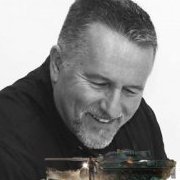
1/32 trumpeter AV8B Harrier
FreightDog and 2 others reacted to miketippingmodels for a topic
Hi Guys This is the 1/32 trumpeter AV8B Harrier, shown in its Italian markings. The kit is showing its age, but with a little TLC it can be turned in to a rather nice kit, I used the Aires cockpit, and wheel wells, along with Reedoak figures, and verlinden carrier deck trucks. Below is the back story An Italian AV-8B Harrier hitched a ride home aboard Wasp-class amphibious assault ship USS Kearsarge (LHD 3) after six months of maintenance in the US. The Italian aircraft, along with its flight crew, returned to Grottaglie Naval Base, Italy, on January 3, after the six months of scheduled maintenance at Marine Corps Air Station Cherry Point, North Carolina, and two weeks of final checks and training aboard Kearsarge. Hope you enjoy Mike3 points -
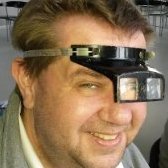
Hong Kong Models B-25J bomber 'Peggy Lou'
BradG and 2 others reacted to Thomas Lund for a topic
Measured out the floor and cut it on my portrait - fit is ok, not perfect but ok But was the floor metal or wood - and was it painted ??3 points -

Fokker pair 2
Greg W and 2 others reacted to sandbagger for a topic
Hi all, 'Spark Advance' control (Ignition Timing) fitted from cockpit lever to engine magnetos linkage rod. Made from 0.3 mm brass tube, 0.1 mm Nickel-Silver rod and scratch link. Mike3 points -

1/24 Airfix RCAF Mustang IV…finally done
Martinnfb and 2 others reacted to R Palimaka for a topic
Way overdue for an update, but again it's just baby steps heading toward painting and final assembly. It's getting all the smaller pieces ready, and making sure they fit the way they're intended to. Biggest task is repairing and replacing all the panel line and fastener detail that was lost in filling and modifying the shape of the nose. Had to laugh when I saw that right after I finished this, ModelMonkey announced that a corrected replacement nose was going to be offered. Oh well, it was a good learning experience. The fastener and rivet detail, and the replacement inspection plates are all Archer resin decals. They are easy to work with, and although I used the appropriate looking 1/32 versions, I see he has released 1/24 scale sheets. Under a first thin coat of primer: Once it is cured and set, some of it will be gently sanded back to look more flush.3 points -
Got a coat of paint on. Will need some touch up that'll probably take longer than it did to get this on, but this is what I have so far. Rib stitching is a bit too prominent, but that can be fixed. One of the most important things I’ve learned so far is that some of our products could be improved, and they will. I've got several new products in the pipeline. Until next time.3 points
-
evening folks ..still plugging away on the wing skinning - the goal is to replicate what you see below on everything behind the mainspar as all forward of it is filled and smooth on the real airframe.. ..some useful shots from aircorps restoration of Lopes Hope.. ..there is litle point showing panel by panel, so here is one panel's story.... I start by making a tape template from household masking tape and burnishing it down to the edges of any adjacent panels with a cocktail stick followed by a pencil mark capturing the face edge of them.. ..this is the forward gun access hatch.. ..then the tape is stuck on a sheet of litho and all the edges scored with one swipe with a scalpel.. the original drawing is scaled to fit this panel and cut out.. ..with the scaled printout stuck to the panel, any rivet detail, or openings are added - rivets one, by one with an awl of different sizes.. any swarf is cleaned up, both surfaces made scrupulously clean and the panel is burnished face side down on hard acrylic sheet with a large metal rod - this gets all the 'pillowing' out where the metal deforms under pressure - afterall all we want is a nice round flat indent representing a flush rivet.. ..the waste is simply broken away by using a hold & fold tool - where I can holding the part, not the waste - a couple of wobbles & it breaks away with a surgical edge.. ..the panel is then positioned and one edge taped down so it folds back on itself but returns to exactly the right position once the contact cement is added to both the panel and the wing.. ..I mask around it to avoid having to clean up every time - the masking must be removed immediately or the glue starts to go off and if the tape is pulled, it pulls big rubbery sheets of adhesive with it.. ..same process repeated on every panel.. ..and now both wings are complete behind the spar - there are some slots added to the wing in front of the gun panels where I will let in a piano hinge.. ..I have been thinking about how to skin the forward part and have decided not to do panel by panel with all the rivets like I did under the wing. I am just going to skin it in two big sheets rolling around the leading edge with zero detail... the idea being that the original was filled smooth and the detailed panels will be almost impossible to do that to so why bother - there are two detailed panels on the leading edge - a panel to get to the gear leg mounts and the landing light so I will leave openings to add those (I stripped the old landing light panel off as I wasn't happy with it).. ..thats all for next time though.. TTFN Peter3 points
-

A Tale of two Cobras: FINISHED
Model_Monkey and 2 others reacted to Dukie99 for a topic
My build of the Viper has caught up with the Whiskey. Next step for both is now to fit the canopy and then it will be time for primer. The Viper is a great build. If you take your time, everything fits really well and as many have already remarked the surface details of the Viper are amazing. Cheers, David3 points -
MH 60 Academy SeaHawk. 1/35 scale.
F-4Phanwell and one other reacted to shark64 for a topic
Fuselage is finally glued2 points -

Make the others jealous
Rick Griewski and one other reacted to scvrobeson for a topic
My order from the WnW 10th Anniversary sale arrived over the weekend. Finally got the BR.1 Camel for my Collishaw collection. Matt2 points -
Welcome back to the hobby! There are many of us that have returned to modeling after an absence and it is always interesting to see products that were not available back then. Our eyesight may be waning but we've got more patience now, haven't we? Enjoying the Revell Fw190 build... might be doing one of these in the future!2 points
-

Hong Kong Models B-25J bomber 'Peggy Lou'
Azgaron and one other reacted to Thomas Lund for a topic
Yes, vertical ribs from T-profiles and hoizontal from thin strip, cut to length, usually 5-6 at a time - same area, same length I can see that I put up the wrong image of the finished framework. I need to make a floor for the rear cabin - working on that right now2 points -
Revell 1/32 Fw 190. First build since 2001.
Out2gtcha and one other reacted to Longbow_06 for a topic
Work on the front gun bay will start soon, but I'm in two minds on the subject. Having the hood open will cover the canopy, and having it closed will cover the gun bay.... These are the reference picture that I have for the detail... Note the extended hood on the above picture, a basic flash hider, which is one of the options in the Revell kit. The other side.... It's a lot of wires lol.2 points -
'the filler was used on the leading edge (posted under fair use) and as can be seen, it does not extend to the wingtip so that panel was left detailed..' AirCorps, from Page 44, shows otherwise. Nice butt joint. Good show, Peter. Sincerely, Mark2 points
-
It's nothing to do with any anti 109 attitudes from Commonwealth posters. It's a legacy of history on here. Luckily people and things seemed to have moved on but in the past there was a very vociferous group who would "critique" any new 109 (if it wasn't Hasegawa) in a way that we don't see now. At that time the best way to make a mod's blood run cold was to open a new topic about a "new tool Trumpeter 109". They knew it would be jumped on even before any box review and a quote I saw on one release was "a hideous, misshapen hunk of crap". So that was the attitude that was about at that time. If you dared build one you had to be prepared for constant whinging and unecessary and often unfounded criticism. As an example, have a look at my first post on a Trumpeter 109 I "dared" to build back in 2010 just to let me get on with it in peace. https://forum.largescaleplanes.com/index.php?/topic/31093-trumpeter-132-109f-4-trop/ The 109 is a very iconic aircraft but the controversy it used to cough up was quite startling. There is/was also an ongoing desire for another 109 and another and another......... I think the general populace got pretty fed up with it all so even now it can still raise a few comments, but I like to think the current climate on here is a lot more mature and far less reactionary.2 points
-
1/32 Intruder A
blackbetty and one other reacted to Mr b for a topic
Hi folks been awhile, busy packing, rapping up my job....etc.....got some work done......this will be the final push, the gb is this coming Sunday....and more over need to pack up my supplies....I really want to finish it....wish me luck all just needs fixing....easier said then done hehehe probe , windshield and gear on..... did some lines....nice gear design n molding.....looks good so that’s about the update, next once should see the bits on n on its display.......wish me luck...... happy modeling folks2 points -
Gluing frameless clear parts
Woody V and one other reacted to TimHepplestone for a topic
I recently used a uv curing glue when glueing a canopy to the frame on my F4. It’s one of those pen like dispensers with a uv light on one end. A small smear of glue on the underside of the canopy,5 seconds of UV light and sorted. In hindsight I should have painted the edge of the canopy as you get some reflection of light from the join when viewing from the certain angles2 points -
Revell 1/32 Fw 190. First build since 2001.
Hartmann52 and one other reacted to Longbow_06 for a topic
Thank you, Kevin.... Let's get on with the build. This is the one I plan on working on, a Stab aircraft of SG2, late in the way, early 1954. I'm still working on the images, so it may take a little trial and error.2 points -

Do you strain your paint?
D.B. Andrus and one other reacted to themongoose for a topic
Those work great...my wife got mad when i started using the good ones!2 points -

Do you strain your paint?
D.B. Andrus and one other reacted to thierry laurent for a topic
I guess you will probably not believe me if I tell you that I did it once with woman stockings as I wanted to paint on a Sunday, all shops were closed and I had nothing else to filter paint!2 points -

1/24 Airfix RCAF Mustang IV…finally done
Martinnfb and one other reacted to R Palimaka for a topic
Continuing on with refining the panel lines, etc, before painting. I had to deal with a couple of nasty sink "trenches" along the wings, near the ailerons. While I was at it I drilled and filed out the square outlets in front of the cartridge ejection chutes. Finally, for today, I replaced some rivet detail on the landing gear covers, which will be sanded back slightly and primed. Clam shell doors, the one on the right has it's first thin coat of primer:2 points -
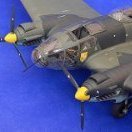
1/48th Boeing B-52H Stratofortress
Starfighter and one other reacted to tomprobert for a topic
The last few sessions at the bench have focused on the vertical stabiliser. After the parts were removed from the backing sheet and sanded to the correct depth, I set about adding some internal bracing using 1mm plastic card. I left these protruding from the base, as these extensions will be inserted into the fuselage as an anchor. I also opened up and boxed in the distinctive intake on the leading edge of the fin: IMG_0986 by Thomas Probert, on Flickr After careful consultation of plans, I opened up two slots on the fuselage top so that the fin anchor points could slide into place: IMG_0991 by Thomas Probert, on Flickr And hey presto - a fin that fits! IMG_0989 by Thomas Probert, on Flickr There'll be a quick lick of filler needed around the base, but the fit is excellent. This will probably be the last update for a while as I return to teaching on Tuesday - books to mark and lessons to plan will mean a lot less time at the bench... Tom2 points -
When will we get an F-22 or F-23 in 1/32
Squizzy 78 and one other reacted to ericg for a topic
An F-22 would be great, unfortunately manufacturers are falling over themselves to provide us with 109’s instead!2 points -
Thanks guys! The Montex mask set did not supply decals for the #740 on the landing gear covers. Surprising omission since they are well within the scope of a mask, size-wise. So I made some paint masks for it using the Silhouette Portrait cutter. I've painted the armored glass using the masks provided by Montex. The tail wheel gear has been painted and assembled. Some additional weathering will be applied to struts and doors.2 points
-
2 points
-

1/18 P51C Mustang "Lopes Hope the 3rd"
R Palimaka and one other reacted to williamj for a topic
I'm almost certain Peter does crossword puzzles with a ballpoint pen. This will be a great book.A Mustang must have.2 points -
And here we are... still working on it ... I found that in a few spots I hadn't mixed the putty enough and it stayed soft, so had to gouge out the soft part, make up more putty and re do it.. (I'm up to 5 boxes of putty now)... but I'm reasonably pleased at how it looks and the way the seams fit.. So there you go... Tune in next week to see what happens ! Hopefully I won't have fallen off the mountain !! Cheers2 points
-

A Tale of two Cobras: FINISHED
scvrobeson and one other reacted to Dukie99 for a topic
A bit more progress: finished the main painting of the two Cobras. Sprayed future and the Whiskey and decaled it with decals from Caracal. I thought that this red on grey scheme was looking good. I need to paint the tail of the Zulu Nato black and then future and decals. The Zulu has been a joy to build, great engineering and details. Some pics: More progress soon. Cheers, David2 points -

A Tale of two Cobras: FINISHED
scvrobeson and one other reacted to Dukie99 for a topic
Time for an update on the Zulu. After giving a coat of primer, it was time to add the photoetch. I am not a big fan of phototech because I am usually bad at it, but here the pe is a pleasure to work with, it is very thin and conforms well and all the places where the pe goes is recessed so you get a very nice flush finish without much effort. I like it a lot. See for yourself. Cheers, David2 points -
1 point
-
hello fellows I've had some free time this week, so i started the tail rigging, I'm using EZ line for the non load bearing rigging and 2lb fishing line with Bobs eyelets and tube for structural rigging in the wings I have build 6 or 7 WnW kits and i have to say this is the best kit yet. It is huge and getting tricky to handle, i have the tail control wire to rig, then i'll make a wing jig to make the rigging easier ( i hope) yes i know some of the brackets have bent over, there now fixed test fitting the assemblies1 point
-
Here's my set up, Gaz: It's a pair of light stands that I bought as a kit off eBay for around $120. Each head has 5 daylight globes in it, and they're all individually switchable. As you can see, each head comes with a diffuser cover. The table is a sheet of MDF I had cut to size at Bunnings, 80cm x 80cm. I bought a set of metal table legs (also from Bunnings), and screwed into place under each corner. Voilà! Not seen in the photo is the 84cm-wide sheet of white paper that I use as a continuous base and backdrop. I bought this from Staples online (now Winc, apparently) for around $30, and it's about 50m in length from memory. Whenever the current sheet gets a bit grubby, I just remove it, and roll out and tack up a new section. Voilà! The photo below gives an indication of the size of the set up: That's an A2 cutting mat, with the HK Models 1/32 Meteor sitting atop it. This might seem like overkill, but given that I take photos for publication and magazine work, I really need the best set up my meagre budget can afford. The whole thing was probably not much more than AU$200. I used this configuration with an old Fuji bridge camera for a long time, before finally upgrading to a Canon DSLR in late 2017. A couple of sample photos, though admittedly after post-processing with Photoshop: The top photo is not as sharp as it could be, as I was still getting used to the new camera at the time (still am, really!). I also bought a selection of A3-sized coloured card to use as alternative surfaces for occasions where white doesn't work so well: Kev1 point




